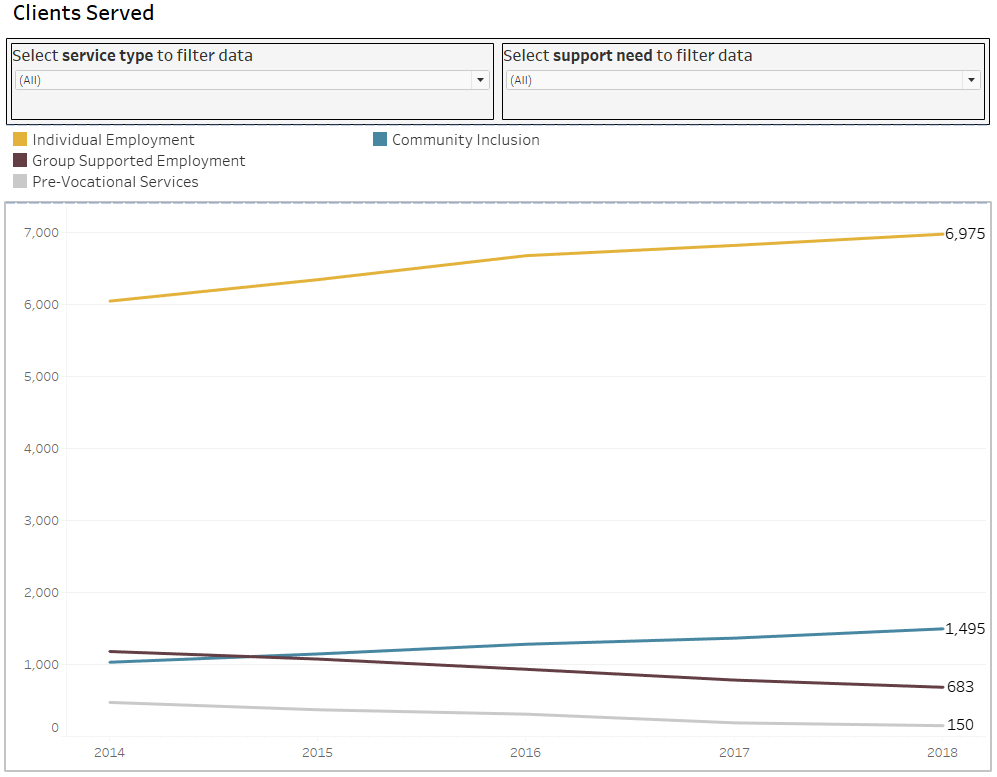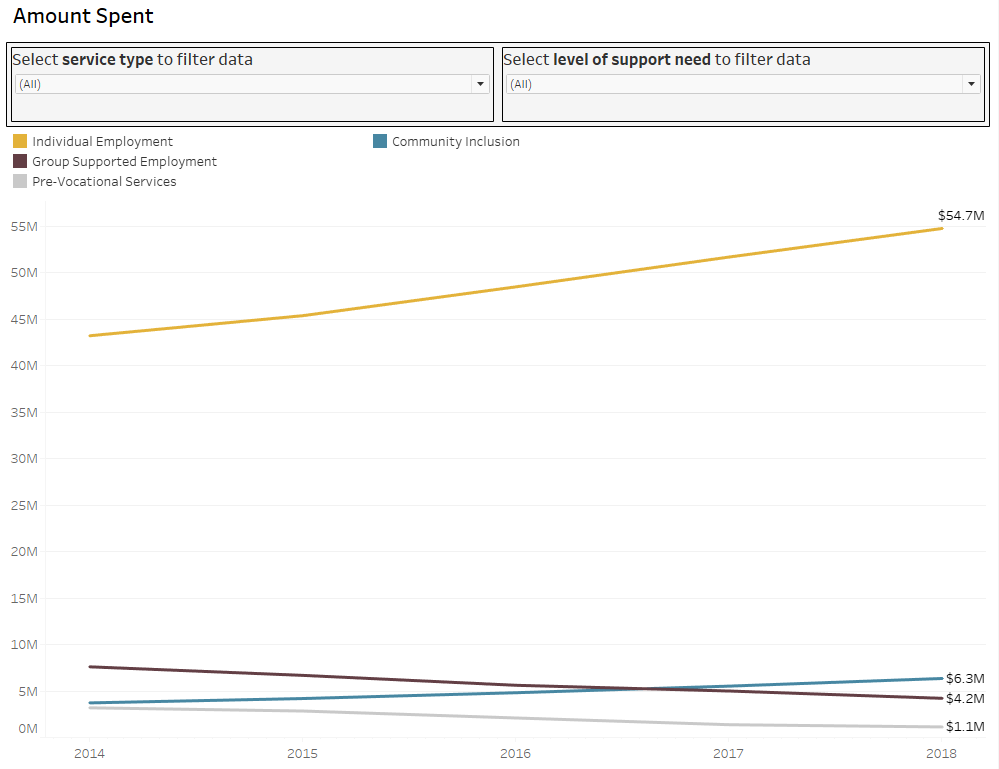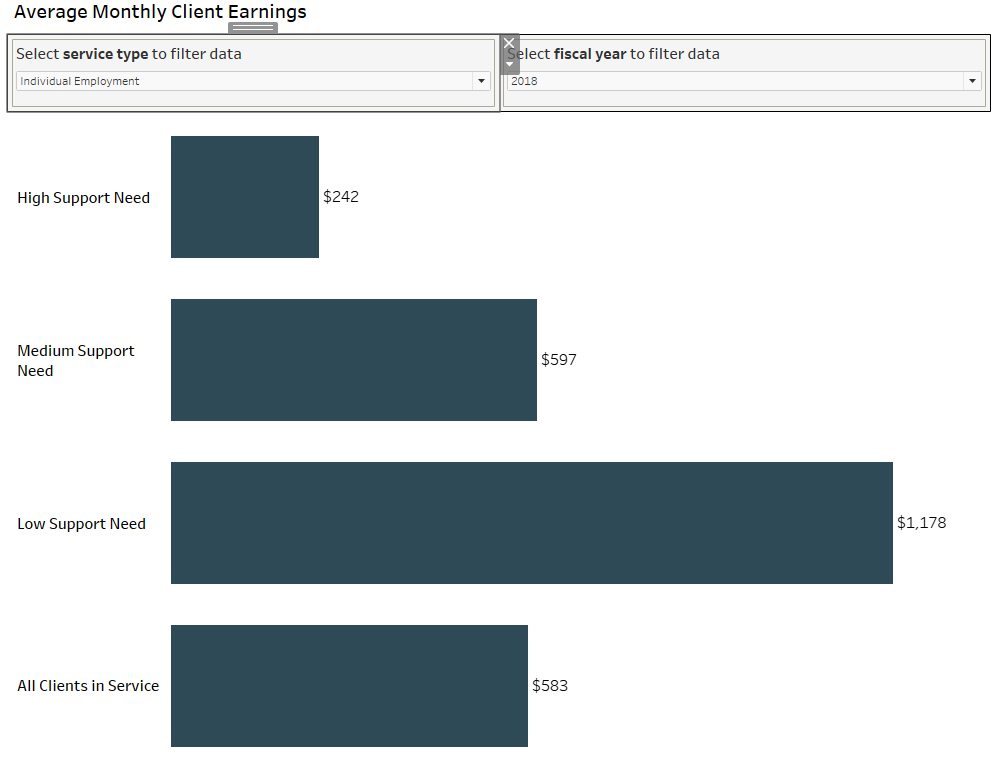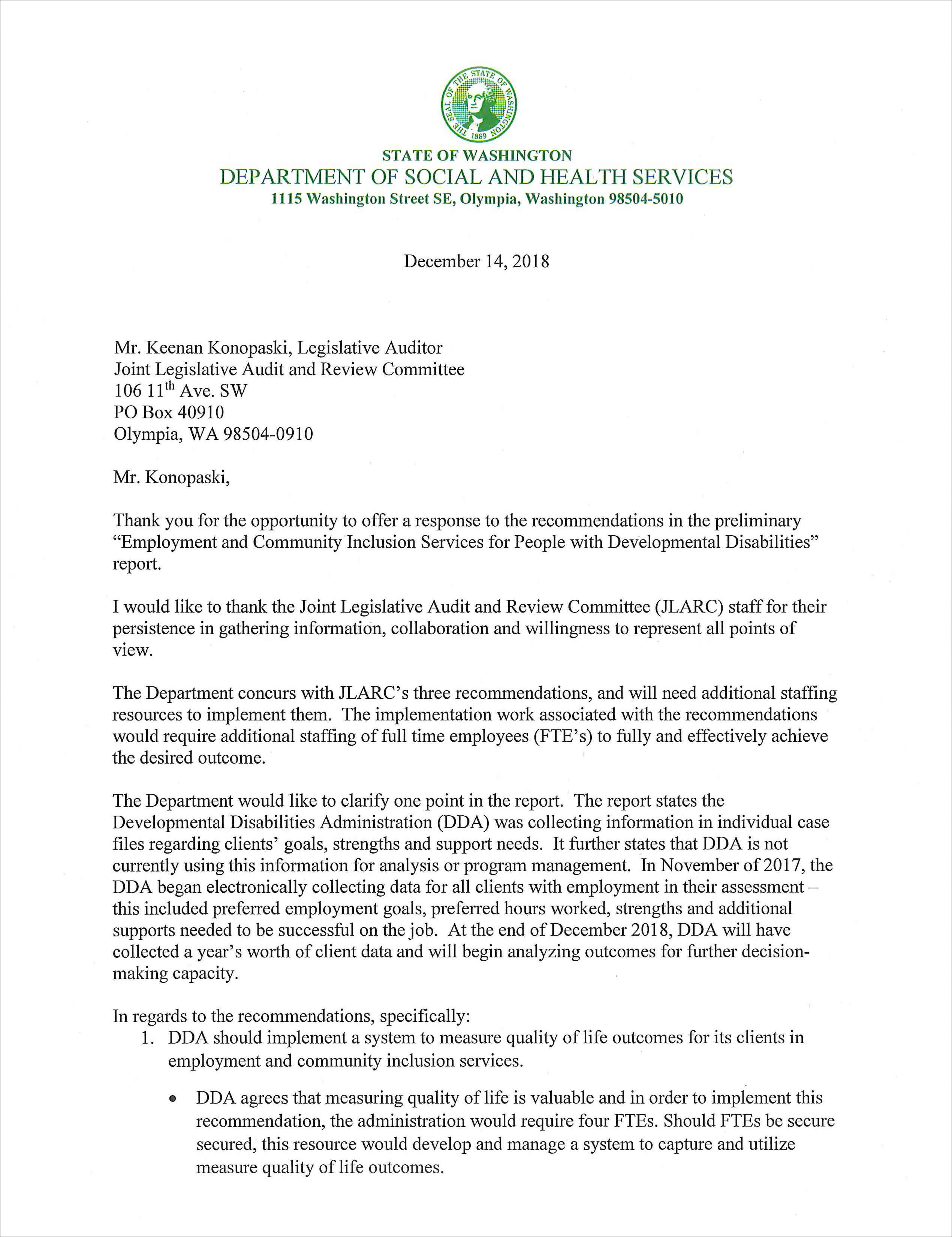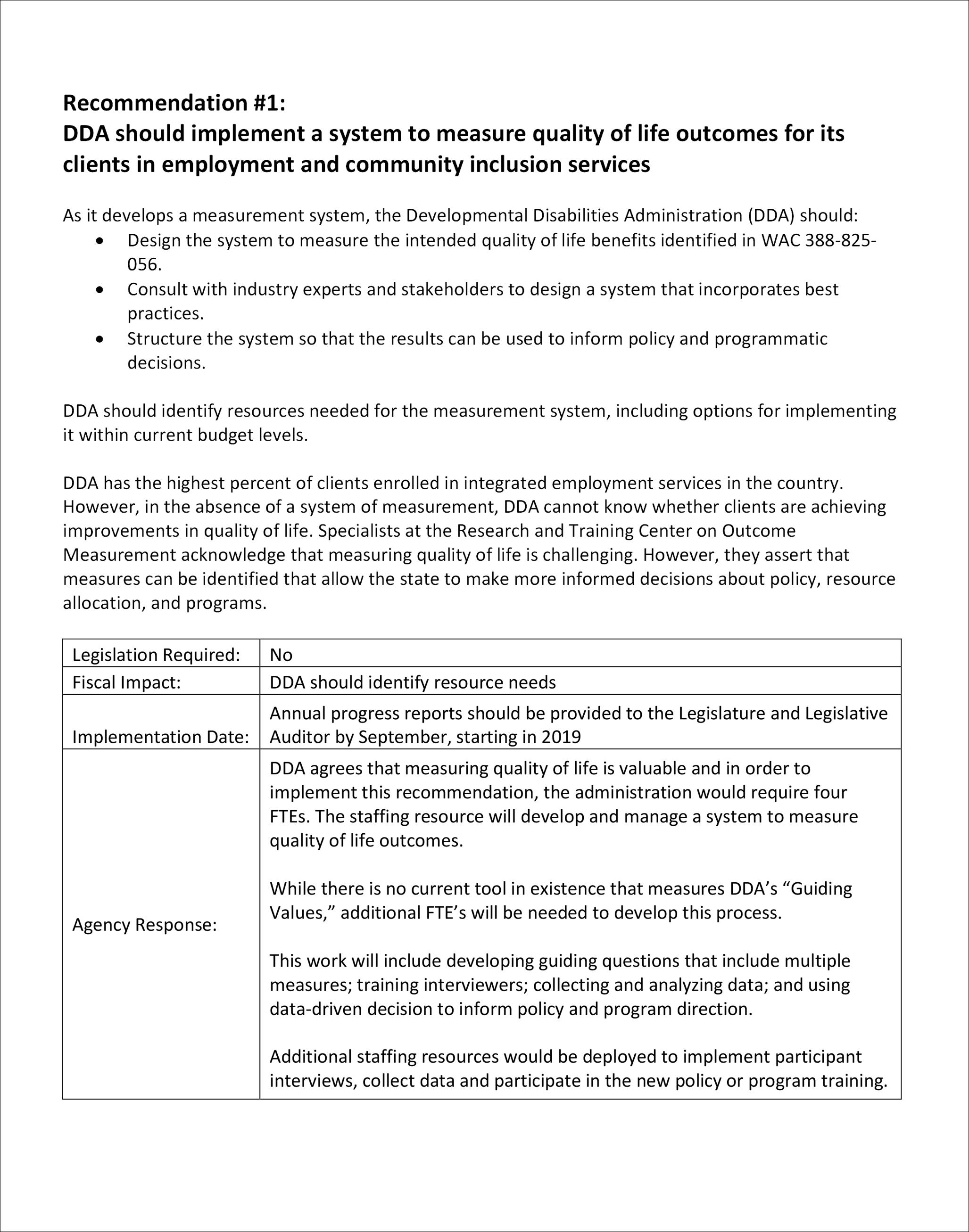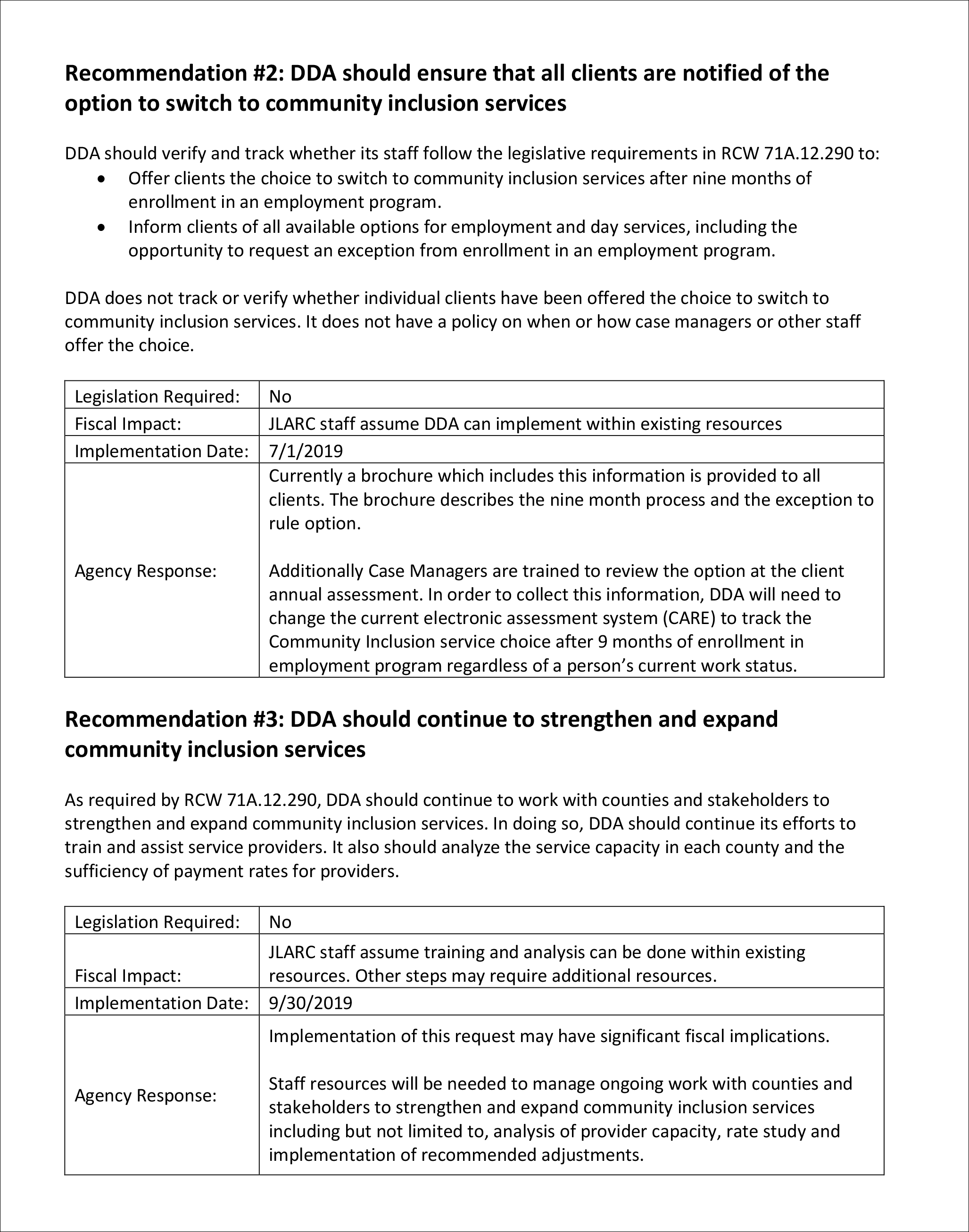The 2017 operating budget directed the Joint Legislative Audit and Review Committee (JLARC) to evaluate employment and community inclusion services for persons with developmental disabilities. The Developmental Disabilities Administration (DDA) oversees services through program agreements with county developmental disability authorities. Most counties contract with private companies to provide services.
DDA prioritizes individual employment services
Individual supported employment services assist clients with finding jobs in integrated community work places that pay at least minimum wage. DDA prioritizes this service over other employment and community inclusion services. See tab 2 for more detail.

Washington leads the nation in helping clients get jobs. However, few of them meet DDA’s objective of earning a living wage.
Compared to other states, Washington has the highest percent of clients enrolled in integrated employment services. The goal of individual supported employment services is gainful employment, which DDA defines as clients' achievement of, or progress towards, earning enough money to meet their living expenses. JLARC staff analyzed client data and found that 10% of clients earned a living wage (i.e., more than the federal poverty level). See tab 3 for more detail.
DDA does not directly measure quality of life outcomes for its employment and community inclusion programs
DDA intends that its services provide quality of life benefits for clients, such as choice, relationships, integration in the community, and competence. However, DDA does not measure quality of life outcomes, so it is unable to systematically determine if clients are receiving them. Although measuring quality of life outcomes is challenging, specialists in the field identify best practices, included in this report. See tab 4 for more detail and Appendix D for the specialists' report on best practices.
DDA does not verify or track whether individuals are offered the choice to switch to community inclusion services
By law, DDA clients cannot receive employment and community inclusion services at the same time. Nearly all clients start with employment services. After nine months, the law requires DDA to offer community inclusion services to clients. DDA does not verify whether it meets that mandate. See tab 5 for more detail.
Stakeholders told JLARC staff that the service system is complicated
JLARC staff interviewed a variety of stakeholders about the process of requesting, authorizing, and receiving employment and community inclusion services. Clients and families reported that they had challenges navigating the system and understanding both the programs we reviewed and the broader system. See tab 6 for more detail.
Legislative Auditor recommends developing a system to measure quality of life outcomes and implementing statutory requirements for community inclusion
The Legislative Auditor makes three recommendations. DDA should:
- Develop a system to measure quality of life outcomes for its clients.
- Ensure that eligible clients are offered the choice of community inclusion after nine months in employment services.
- Report to the Legislature on its efforts to strengthen and expand the community inclusion program, including an analysis of provider capacity and rate structure.
The Department of Social and Health Services concurs with these recommendations. You can find additional information on the Recommendations tab.
Committee Action to Distribute Report
On January 10, 2019 this report was approved for distribution by the Joint Legislative Audit and Review Committee. Action to distribute this report does not imply the Committee agrees or disagrees with Legislative Auditor recommendations.









